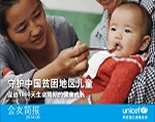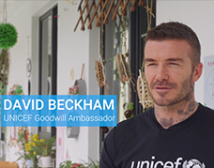13 JULY 2017| GENEVA | NEW YORK – Some 3 in 10 people worldwide, or 2.1 billion, lack access to safe, readily available water at home, and 6 in 10, or 4.5 billion, lack safely managed sanitation, according to a new report by the World Health Organization (WHO) and UNICEF.

The Joint Monitoring Programme report, Progress on Drinking Water, Sanitation and Hygiene: 2017 Update and Sustainable Development Goal Baselines, presents the first global assessment of “safely managed” drinking water and sanitation services. The overriding conclusion is that too many people still lack access, particularly in rural areas.
“Safe water, sanitation and hygiene at home should not be a privilege of only those who are rich or live in urban centres,” says Dr Tedros Adhanom Ghebreyesus, Director-General, World Health Organization. “These are some of the most basic requirements for human health, and all countries have a responsibility to ensure that everyone can access them.”
Billions of people have gained access to basic drinking water and sanitation services since 2000, but these services do not necessarily provide safe water and sanitation. Many homes, healthcare facilities and schools also still lack soap and water for handwashing. This puts the health of all people – but especially young children – at risk for diseases, such as diarrhoea.
As a result, every year, 361 000 children under 5 years die due to diarrhoea. Poor sanitation and contaminated water are also linked to transmission of diseases such as cholera, dysentery, hepatitis A, and typhoid.
“Safe water, effective sanitation and hygiene are critical to the health of every child and every community – and thus are essential to building stronger, healthier, and more equitable societies,” said UNICEF Executive Director Anthony Lake. “As we improve these services in the most disadvantaged communities and for the most disadvantaged children today, we give them a fairer chance at a better tomorrow.”
Significant inequalities persist
In order to decrease global inequalities, the new SDGs call for ending open defecation and achieving universal access to basic services by 2030.
Of the 2.1 billion people who do not have safely managed water, 844 million do not have even a basic drinking water service. This includes 263 million people who have to spend over 30 minutes per trip collecting water from sources outside the home, and 159 million who still drink untreated water from surface water sources, such as streams or lakes.
In 90 countries, progress towards basic sanitation is too slow, meaning they will not reach universal coverage by 2030.
Of the 4.5 billion people who do not have safely managed sanitation, 2.3 billion still do not have basic sanitation services. This includes 600 million people who share a toilet or latrine with other households, and 892 million people – mostly in rural areas – who defecate in the open. Due to population growth, open defecation is increasing in sub-Saharan Africa and Oceania.
Good hygiene is one of the simplest and most effective ways to prevent the spread of disease. For the first time, the SDGs are monitoring the percentage of people who have facilities to wash their hands at home with soap and water. According to the new report, access to water and soap for handwashing varies immensely in the 70 countries with available data, from 15 per cent of the population in sub-Saharan Africa to 76 per cent in western Asia and northern Africa.
Additional key findings from the report include:
-
Many countries lack data on the quality of water and sanitation services. The report includes estimates for 96 countries on safely managed drinking water and 84 countries on safely managed sanitation.
-
In countries experiencing conflict or unrest, children are 4 times less likely to use basic water services, and 2 times less likely to use basic sanitation services than children in other countries.
-
There are big gaps in service between urban and rural areas. Two out of three people with safely managed drinking water and three out of five people with safely managed sanitation services live in urban areas. Of the 161 million people using untreated surface water (from lakes, rivers or irrigation channels), 150 million live in rural areas.
Note to editors
Safely managed drinking water and sanitation servicesmeans drinking water free of contamination that is available at home when needed, and toilets whereby excreta are treated and disposed of safely.
Basic services mean having a protected drinking water source that takes less than thirty minutes to collect water from, using an improved toilet or latrine that does not have to be shared with other households, and having handwashing facilities with soap and water in the home.
Sustainable Development Goal 6 is to ensure availability and sustainable management of water and sanitation for all. The JMP monitors progress on the following two targets:
-
6.1 By 2030, achieve universal and equitable access to safe water and sanitation for all.
-
6.2 By 2030, achieve access to adequate and equitable sanitation and hygiene for all and end open defecation, paying special attention to the needs of women and girls and those in vulnerable situations.
The JMP also contributes to monitoring of SDG 1 “to end poverty in all its forms everywhere”, and “to SDG 4 to ensure inclusive and equitable quality education and promote lifelong learning opportunities for all” by contributing data on basic water, sanitation and hygiene for the following targets:
-
1.4 By 2030, ensure that all men and women, in particular the poor and the vulnerable, have equal rights to economic resources, as well as access to basic services.
-
4.a Build and upgrade education facilities that are child, disability and gender sensitive and provide safe, non-violent, inclusive and effective learning environments for all.
Safe water, sanitation and hygiene are also essential to SDG 3 “Ensuring healthy lives and promote wellbeing for all at all ages”. Under SDG target 3.9, countries are working to substantially reduce the number of deaths and illnesses from hazardous chemicals and air, water and soil pollution and contamination by 2030. Additionally, safe water, sanitation and hygiene are needed to reduce maternal mortality and to end preventable deaths of newborns and children as called for in SDG targets 3.1 and 3.2.
About the JMP
The WHO/UNICEF Joint Monitoring Programme (JMP) for Water Supply, Sanitation and Hygiene is the official United Nations mechanism tasked with monitoring country, regional and global progress, and especially towards the Sustainable Development Goal (SDG) targets relating to universal and equitable access to drinking water, sanitation and hygiene. Thanks to the globally supported household surveys, JMP analysis helps draw connections between use of basic water and sanitation facilities and quality of life, and serves as an authoritative reference to make policy decisions and resource allocations, especially at the international level.
For more information, please contact:
Geneva
Nada Osseiran
World Health Organization
Tel: +41 22 791 4475, Mobile: +41 79 445 1624, osseirann@who.int
Kim Chriscaden
World Health Organization
Tel: +41 22 791 2885, Mobile: +41 79 603 1891, chriscadenk@who.int
New York
Yemi Lufadeju
UNICEF
Tel: +1 212 326 7029, Mobile: +1 917-213-4034, glufadeju@unicef.org
Christopher Tidey
UNICEF
Mobile: +1 917 340 3017, ctidey@unicef.org





























